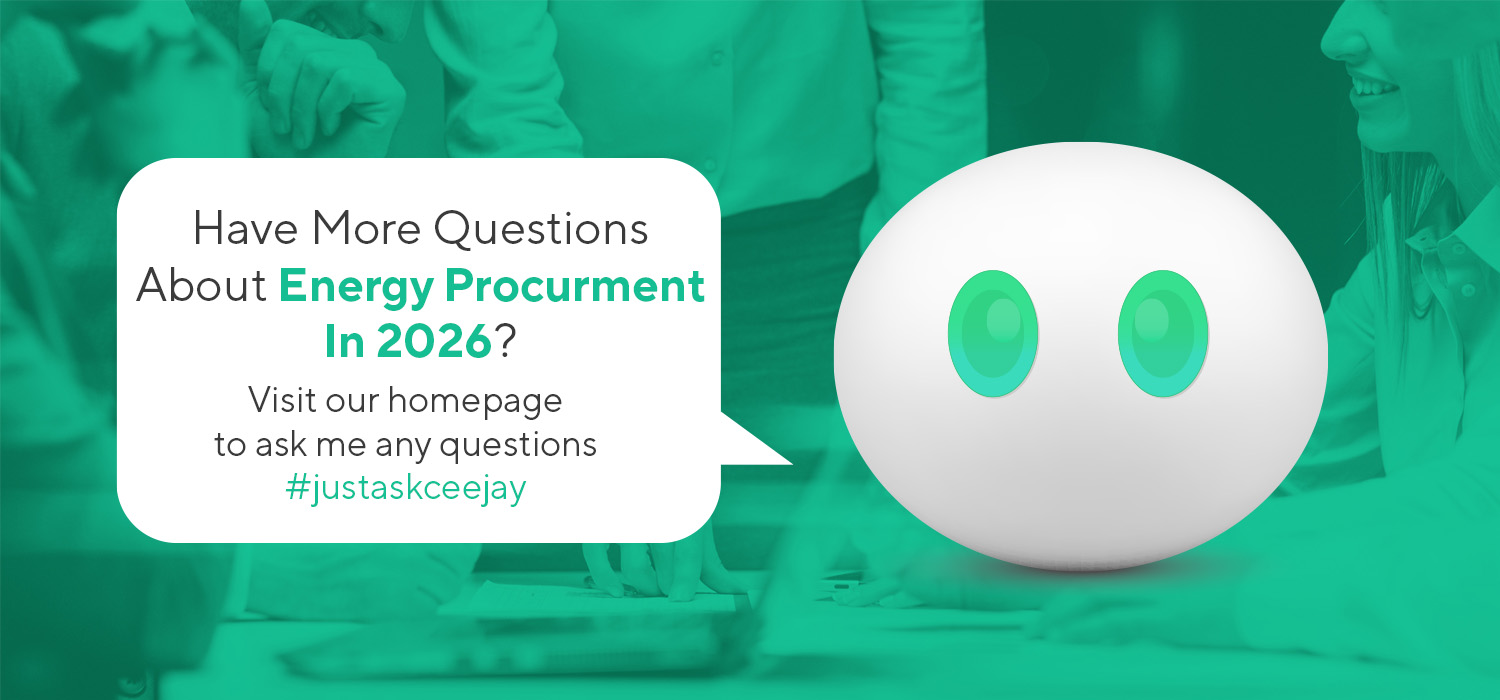As we move into 2026, the role of energy procurement for commercial and industrial businesses is evolving rapidly. What was once a routine renewal exercise is now a strategic lever that drives cost control, risk management, and sustainability advantage.
At Inteb, we believe that getting timing, risk appetite, and procurement structure right is the difference between simply buying energy; and buying it well.
In this article, we explore how non-commodity costs are changing, why timing matters more than ever, how risk tolerance shapes your strategy, and where the real opportunity lies beyond chasing the lowest unit rate.

Understanding market data and renewable trends is key to shaping a resilient Energy Procurement Strategy 2026.
Non-Commodity Costs Are Shifting: 2025/26 and Beyond
Non-commodity charges now make up over half of a typical electricity bill, and their share is increasing year on year. As we move into 2025/26, two major cost drivers are reshaping business energy budgets:
The Nuclear Regulated Asset Base (RAB) model is a new government-backed financing mechanism supporting projects like Sizewell C. Unlike the Contracts for Difference (CfD) scheme; which applies once a generator is operational; the RAB model allows developers to recover costs during construction, reducing borrowing risk and long-term financing costs.
From 1 November 2025, a new consumption-based levy will appear on all electricity bills to help fund the construction and operation of Sizewell C:
While small at first glance, this levy adds a permanent cost for all but Energy-Intensive Industries (EIIs) with valid exemption certificates. Over time, it will compound for large energy users; particularly across multi-site portfolios.
Even if wholesale prices fall, fixed non-commodity charges like this will keep total bills elevated, underlining the need for proactive procurement and energy-reduction strategies.
Electricity network charges fund the high-voltage transmission grid (TNUoS) and local distribution systems (DUoS), covering:
The National Energy System Operator (NESO) forecasts a sharp increase from 1 April 2026, with an additional £1.01 billion to be recovered from customers; roughly 40% higher than early 2025 projections.
Suppliers have already adjusted standing and capacity charges accordingly, meaning organisations comparing quotes before and after these re-forecasts will see noticeable uplifts.
What This Means for Businesses
These regulatory, network, and environmental costs are unavoidable, but how you buy and manage energy can significantly influence your exposure.
| Strategy | Action |
| Review contracts early | Fix at the right time to protect against future increases. |
| Model future budgets | Build expected non-commodity uplifts into forecasts. |
| Consider pass-through vs fully-fixed | Pass-through contracts can avoid supplier premiums but require active monitoring. |
| Review capacity | Reduce under-used capacity bands; but plan ahead for electrification growth. |
| Integrate procurement with Net Zero | Efficiency, flexible load, and on-site generation can materially offset rising non-commodity costs. |
What Counts as Non-Commodity Costs?
| Category | Examples |
| Network & Metering | TNUoS, DUoS, MOP/DC/DA charges |
| Environmental & Social Schemes | CfD, RO, FiT, ECO, RAB Levy |
| Taxes & Levies | Climate Change Levy (CCL), VAT |
| Supplier & System Costs | Balancing, admin, losses, margins |

Accurate market analysis and timing are crucial for developing an effective Energy Procurement Strategy 2026.
Timing: More Than Just Market Watching
In volatile markets, timing is everything. Get it right and the rewards can be significant; get it wrong and the impact can last long after the contract is signed.
Yet many organisations still treat procurement as a once-a-year exercise. In 2026, that approach is no longer viable.
Good timing looks like:
During the 2022–23 energy crisis, businesses that procured months earlier secured rates up to 20–30% lower than those who waited until Q4; proof that timing is no longer optional.
Risk: Understanding Your Appetite
As non-commodity charges increase, procurement is becoming risk management, not just price negotiation.
Every organisation has a different tolerance for risk. The goal is to align contract structure with business priorities, cash flow, and sustainability goals.
| Contract Type | Pros | Cons | Best For |
| Fixed | Budget certainty; simple to manage | Premiums for future non-commodity increases; locked into higher assumptions | Businesses prioritising cost stability or limited internal resource |
| Flexible | Market transparency; ability to respond to change | Requires governance; fluctuating budgets | Large users with energy expertise or managed-risk partners |
| Hybrid | Balance of certainty + opportunity; supports on-site generation integration | Moderate complexity; terms vary | Medium-large users seeking protection with optimisation potential |
Fixed = Certainty but Premiums.
Flexible = Transparency but Governance.
Hybrid = Balance and Adaptability.
Rising RAB and TNUoS costs make this alignment critical: each model absorbs non-commodity volatility differently.

Forward-thinking decisions within an Energy Procurement Strategy 2026 help businesses stand out and build resilience beyond price.
Opportunity: Looking Beyond Price
The most forward-thinking businesses no longer treat energy as a commodity — they treat it as a strategic asset.
1 – Integrate Procurement with Carbon & ESG Goals
2 – Turn Energy from Cost Centre to Competitive Advantage
3 – Leverage Data, Insight & Innovation
The Strategic Shift for 2026
Procurement in 2026 will be defined less by “What price can I get today?” and more by “What strategy best aligns with my risk, operations, and carbon objectives?”
The shift includes:
What This Means for Large Energy Users
For high-consumption businesses; manufacturing, logistics, property, or data centres; the stakes are even higher:
Bringing It Together: Timing + Risk + Opportunity
A smart procurement strategy balances all three:
In practical terms:

Have questions about your Energy Procurement Strategy 2026? Ask our team how to plan, optimise, and future-proof your energy purchasing decisions.
How Inteb Can Help
At Inteb, we help procurement teams and finance directors design strategies that balance timing, risk, and opportunity.
We:
Because in 2026, the best procurement isn’t just about what you pay; it’s about when, how, and why you buy.
Summary
Energy procurement is no longer about chasing the cheapest rate. In an era of volatility, regulation, and sustainability pressure, it’s a strategic decision that can deliver measurable advantage.
Whether your strategy is Fixed, Flexible, or Hybrid, success in 2026 will come from alignment; between your contracts, operations, and long-term goals.
Buy smart. Plan early. Reduce risk. Achieve more.